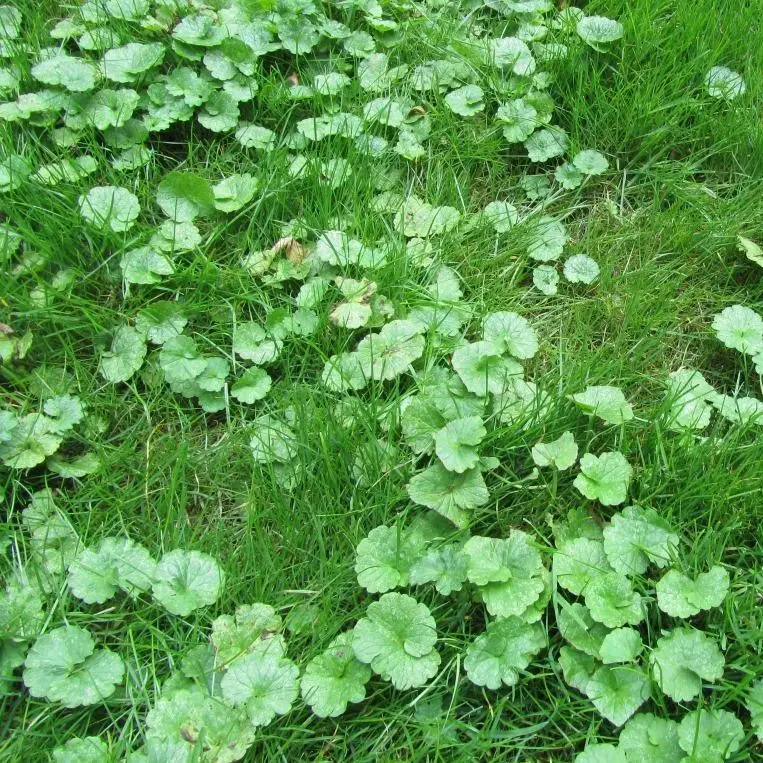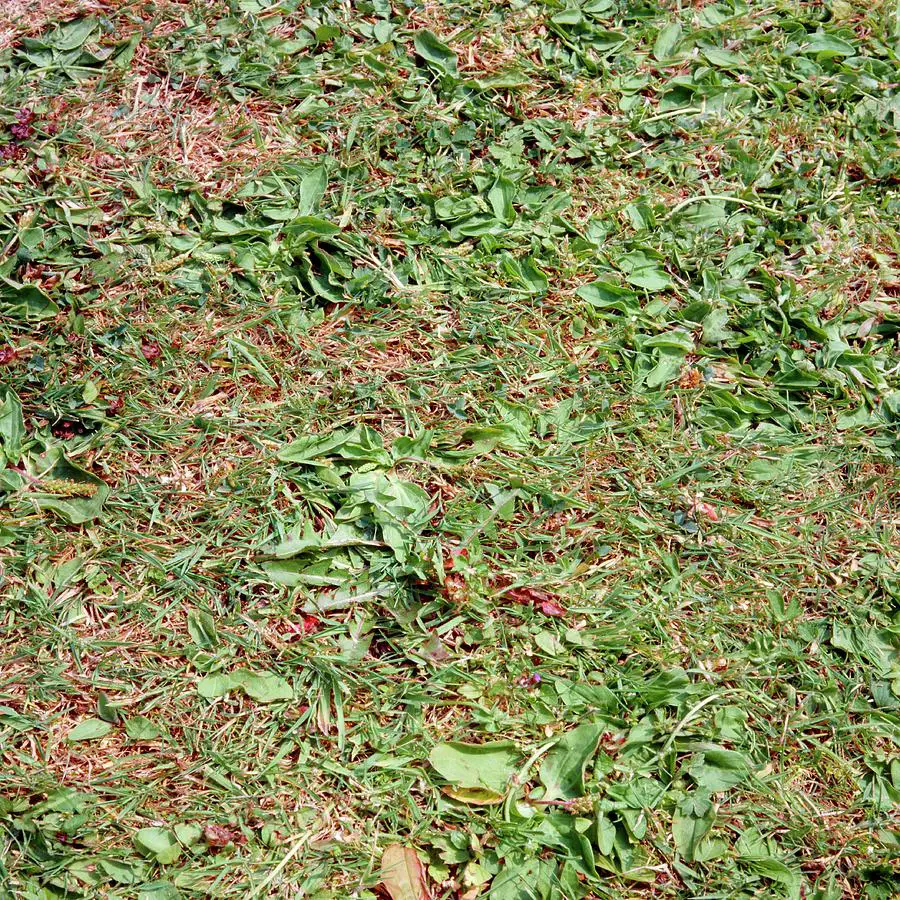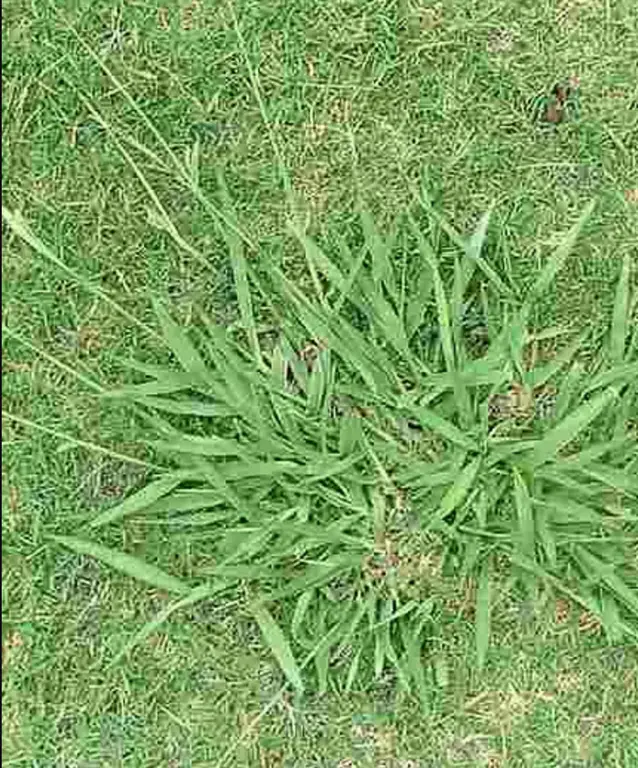How To Remove Weeds From A Lawn
-To remove weeds from a lawn, first identify the type of weed.-Different types of weeds require different removal methods.-For example, dandelions can be pulled by hand, while deeper-rooted weeds may need to be dug up.-Once the weed is removed, take care to prevent future growth by mowing regularly and watering deeply but less frequently.
- Mow your lawn regularly
- This will help to prevent weeds from taking root and spreading
- Use a garden hoe or weed whacker to remove any existing weeds
- Be sure to get the roots as well!3
- Apply a herbicide specifically designed for killing lawn weeds
- Be sure to follow the directions on the label
- Water your lawn regularly and fertilize it according to schedule
- A healthy lawn is less likely to be overrun by weeds
Perennial Grassy Lawn Weeds
While annual grassy weeds get most of the attention from homeowners, perennial grass-like weeds can cause big issues over time.
Here is how to identify 3 common perennial grass-like weeds.
Dallisgrass
Lawn weed identification of Dallisgrass is pretty easy as its growth habit is unique.
Dallisgrass is a perennial grass that grows in clumps which quickly spread across a lawn if untreated.
Leaves are yellowy-green in color and less than half an inch in width. They can grow from 1 inch to 3 inches.
Dallisgrass can easily blend in with real grass if you have a poor quality lawn, but it has a faster growth habit, and will noticeably protrude above your lawn in the days after mowing while the rest of your lawn is still shorter.
Some people confuse Dallisgrass and Crabgrass, but the width of this plant and its growth habit is different .
Control Methods Dallisgrass can adapt to areas with improper drainage systems very well, so youll often find it in wet areas of your lawn. Its tough to pull Dallisgrass by hand to remove it, so this can be a good punishment for kids who have misbehaved .
Most crabgrass preventer pre-emergent treatments are effective against this perennial, but post-emergent herbicides might be necessary if your lawn isnt thick enough to crowd it out.
Pennington UltraGreen Crabgrass Preventer, Pylex Herbicide, Selective Weed Killers, and Treflan will all work well.
Nimblewill
Quackgrass
Common Lawn Weeds: Identification With Pictures
The following 13 plants are the most common lawn weeds youre likely to see in your garden. The list includes some of the most problematic weeds for gardeners.
Well show you how to identify the weeds using pictures and key features. As well as how to treat and prevent each type of weed.
Lets dive in!
Read Also: How Much Does It Cost To Sharpen Lawn Mower Blades
What Is Growing In My Yard
Here at Jeffs Outdoor Services one of the most common questions we get is, What is this weed growing in my yard and how do I get rid of it? Follow along as we identify the 4 most common lawn weeds. Be sure to check out our Lawn Care page to learn more about weed control and fertilization programs to help keep your yard looking its finest and being at its healthiest. We offer a 4, 5 or 6 application program here at Jeffs Outdoor Services. Call today to get signed up
1. The Dandelion
Dandelions have green leaves that are edged with teeth that grow mostly flat to the ground. These bright yellow flowers will fade to form a white puffball. They will appear in yards that arent as healthy as they could be and most often in the spring and the fall.
2. Crabgrass
This weed germinates in the spring and will show up in summer in the bare areas of your lawn or in dry spots. Its will show up in a crab-like circle and has a blue-green tint to its leaves.
3. White Clover
Is a 3 leaf clover with bright green leaves decorated with white crescent shapes. It appears from spring through fall and is usually found in thin lawns with nutrient-poor soil.
4. Creeping Charlie
Also called ground ivy, has dark green round leaves with scalloped edges and purple flowers that appear in spring. It grows in moist, shady areas with poor soil.
Weeds: Why We Hate Them

Those pesky little plant imitators that seem to grow endlessly despite all efforts to eradicate are back!
Weeds are often green, leafy, and sometimes they fit right in with the rest of the grass we grow in our yards.
But weeds are different than grass they suck the nourishment out of even the best-looking lawns and gardens, and crowd out the soft, uniform grass we all strive to grow in our lawn.
Left unabated, weeds will take over your lawn, suffocate your plants, and make your lawn appear patchy, thin, and ugly.
I often find myself wishing that turf grass was as tough and resilient as lawn weeds. But I guess if it was easy to maintain a perfect lawn, everyone would do it.
Mowing too often, watering shallowly, improper fertilizing methods, and poor soil conditions, are all ways inexperienced homeowners foster the perfect habitat for various types of weeds.
So lets get into my guide to lawn weed identification so you know what kind of a problem you have in your lawn, and how to solve it.
Don’t Miss: Where Can I Sharpen My Lawn Mower Blade
Prevention Provides The Best Defense
Not everyone agrees on what a weed is. One person may welcome sunny yellow dandelions, while others pounce to eradicate them before one of the plant kingdoms most cleverly engineered seed machines do their thing.
We can all agree, though, that certain unwelcome invaders pop up among vegetables, creep into the lawn, wedge their way into driveway and sidewalk crevices, or launch a full-on invasion.
The best defense is preventing weeds from taking root in the first place. Keep your lawn lush and eliminate thin, vulnerable spots. Mulch around garden plants and landscaping to stop seeds from reaching the soil. The Weed Science Society of America recommends making sure backyard compost reaches a high enough temperature to decompose any weed seeds mixed in with grass clippings or leaves.
If weeds do take root, decide whether youre willing to eradicate weeds by hand and hoe, experiment with homemade or organic weed killers or go for a commercial herbicide.
Heres a look at some of the most common weeds and how to keep them from taking over.
Spray A Vinegar Solution
Create your own non-toxic weed killer with this natural home remedy.
- Mix one cup of vinegar with a cup of water and one drop of dish soap.
- Shake it up and spray it onto any patches of clover. The vinegar will dry out the clovers leaves, and the dish soap will make sure it sticks.
- You may need to spray over a series of weeks to kill off the clover completely. Unfortunately, the vinegar can damage grass, so spray the solution carefully.
Recommended Reading: How To Get Rid Of Bad Grass In Lawn
What Are Weeds With Yellow Flowers Called
Common lawn weeds with yellow flowers are dandelion, oxalis, purslane, and yellow sweet clover.
Weedy plants with yellow flowers may add bright colors to your lawn. But rather than ruining the appearance of healthy turfgrass, its best for plants with yellow flowers to grow in flower beds, not a lawn.
How To Prevent Lawn Weeds
The best way to prevent lawn weed issues is to practice excellent lawn care methods. This means mowing high, fertilizing lawns regularly, removing thatch, aerating lawns, and overseeding them. Healthy turfgrass with a robust root system prevents weeds from taking root. Additionally, keeping grass longer prevents sunlight from allowing weed seeds to germinate and sprout.
You May Like: How To Calculate Lawn Square Footage
Why You May Want To Keep Clover In Your Lawn
You may not like the look of clover, but it can actually benefit your lawn.
- Natural Fertilizer: Clovers symbiotic relationship with beneficial bacteria allows it to absorb nitrogen from the atmosphere. Ultimately, it can make your lawn greener and more lush. However, this will keep it growing and outcompeting your grass.
- Weed Prevention: Mowing your lawn high will prevent weeds from growing, including clover. But if you like short, neat grass thats under 3 inches, letting clover flourish is a solid option. Clovers leaves cast shade over the soil, making it hard for other weeds to take root and grow and compete with your grass.
How Weeds In Lawns Work
To understand how to treat a lawn, its important to understand the weeds themselves. Weeds are plants, just like the grass in your lawn. Because they are plants, weeds flourish in the same conditions that a lush, green lawn would. Weeds also grow when the grass is cut low and the soil is compacted. These ideal conditions can lead to a lawn full of weeds, but there are a few different types of weeds to be aware of:
- Broadleaf weed. These weeds include dandelions, clover, ground ivy, oxalis, chickweed, thistle, dollarweed, and plantain. The leaves on these weeds are broad and flat.
- Grassy weed. These weeds include crabgrass, foxtail, annual bluegrass, and quackgrass. These weeds grow in blades and look like grass.
- Grass-like weed. These weeds include nut sedge, wild onion, and wild garlic. These weeds may look somewhat like grass, but they grow in a more tubular and hollow shape.
Its important to identify which type of weeds are growing in your yard before choosing a treatment. Some products are specifically designed for certain types of weeds and can only be used for that kind.
Also Check: When Should I Aerate My Lawn In Texas
How To Kill Henbit
Henbit cannot be controlled by mowing. Gallery can be used in centipede and St. Augustine, as well as tall fescue, bermuda, and zoysia lawns as a preemergent. Your best bet to control of established henbit is with the weed killer Southern Ag Lawn Weed Killer with Trimec. Its safe for St. Augustine, centipede, bermuda, zoysia and tall fescue lawns.
How To Kill Wild Violets

Wild violets are best controlled in the fall. Avoid hot dry times and begin your treatments after temperatures have dropped. Unfortunately, there is no effective weed killer that will eliminate wild violet before it grows. Also, be prepared to make multiple treatments to rid your yard of this nuisance weed. In dormant bermuda grass and zoysia grass, use TZone SE. In centipede grass, use Tenacity. Dont be shell-shocked with the price of either of these, nothing cheap is going to kill wild violets.
Also Check: How To Get Rid Of Clover Out Of Your Lawn
How To Kill Purslane
Prevention is the key by having a dense, healthy lawn. However, if purslane develops, it can be hand-pulled or treated with a weed killer. Preemergent weed killers include Gallery 75 DF in centipede and st. augustine, tall fescue, bermuda and zoysia yards. Simazine can be used in centipede lawns. Post emergent control can be obtained by Tenacity Herbicide in bermuda, tall fescue, kentucky bluegrass and zoysia and 2,4-D in centipede.
Shepherd’s Purse Capsella Bursa
Look for rosettes of the distinctive, deeply toothed leaves of this annual weed and remove young plants by hand early in the season. Continue to monitor for weeds and remove before they set seed to reduce the seed load in the soil.
The best weed killers for shepherd’s purse: The iron-based herbicides listed above are labeled for use against shepherd’s purse, as is Barricade Professional-Grade Pre-Emergent Weed Control. Applications of Barricade should be made in late summer, fall, or winter to prevent seed germination of this cool-season weed.
Don’t Miss: How Make Your Lawn Green
Identifying Lawn And Garden Weeds
If all that stands between you and a beautiful lawn is a handful of pesky weeds, youre not alone! In general, garden soils contain a great many weed seeds waiting for their chance to germinate.
Some weed seeds will last for many years in the soil and sprout and grow only when the conditions are right. Unfortunately, weedkillers will not affect weed seed in the soil, only flowers and roots of a germinated weed.
Here are some of the most common lawn and garden weeds and what you can do to control their spread.
The Steps For Controlling Weeds
These are the general steps for how to get rid of weeds in your lawn, regardless of the type of treatment.
Recommended Reading: Can I Water My Lawn At Night
Spring Blooming Lawn And Garden Weeds: A Focus On Winter Annual Identification And Management
Erin Hill and Angela Tenney, Michigan State University Plant & Pest Diagnostics -April 13, 2022
Understand your spring blooming lawn and garden weeds for better control.
The yellow flowers of perennial dandelion are always a sign that spring is here, but there are many other less conspicuous weeds flowering at this time. Many of the early-blooming spring weeds are categorized as winter annuals, meaning they germinate in the fall, over-winter in a vegetative state, flower in the spring and produce seeds by late-spring to early-summer before ultimately dying. During the heat of the summer, these species mostly exist as seeds awaiting the opportunity to germinate in the fall. This lifecycle contrasts that of summer annuals, which act more like our annual bedding plants and vegetables.
Following are photos and descriptions of some of the most common winter annual weed species from home lawns and gardens that we at Michigan State University Plant & Pest Diagnostics are asked to identify each year. We conclude with some general recommendations for managing these weeds.
Weeds In Lawns & Gardens
Every garden has weeds and dealing with these unwanted plants is an ongoing task in any landscape. Control of weeds is important. Weeds are strong competitors for available water, nutrients, and sunlight. Reduced air circulation created by tall weeds encourages the development and spread of foliage diseases and a weedy garden often has more insect problems. While a completely weed-free garden is not attainable, reducing weeds is beneficial.
Keeping ahead of weeds and controlling them when they are small is essential for good weed management. This requires persistence throughout the entire growing season to remove weeds as they emerge.
| | | Related Publications
Also Check: What Is The Best Riding Lawn Mower For 1 Acre
Common Lawn Weeds And How To Get Rid Of Them
Even the best-tended lawns come under attack from common weeds. Weed seeds float in on the wind, creeping weeds claim more territory, and weeds you thought you pulled quietly continue to grow. How well your lawn copes with the onslaught depends on the weeds involved, the response you choose and your lawns overall health. Understanding common lawn weeds and the options available to fight them can help you successfully combat the invasion.
To help simplify weed defense, weve charted 10 common lawn weeds, including their characteristics, type and how they spread, and most importantly- how to eliminate them. Weeds, like ornamental garden plants, can be annuals or perennials. Annual weeds, such as crabgrass, complete their entire life cycle in a single growing season, and then die, leaving seeds behind to continue the legacy. Perennial weeds, such as dandelions, come back year after year from their roots, and distribute new seeds to boot. Weeds can also be grass-like, broadleaf or sedge. Choosing the right weed control product requires understanding the weed you want to fight and its stage of growth. Pre-emergent weed controls, sometime called preventers, work to keep weed seeds from germinating and developing. Post-emergent weed controls fight weeds that have already germinated and emerged from the soil.
If The Weed Has Gone To Seed You Will Need To Remove The Entire Plant So That The Seeds Do Not Spread

If your weed has gone to seed, you will need to remove the entire plant so that the seeds do not spread. Depending on the type of weed, this can be done by either pulling it up by the roots or cutting it down at the stem. If you are unsure of how to identify a weed that has gone to seed, look for plants that have produced flowers or fruits. Once you have removed the weed, dispose of it in a garbage bag or container so that the seeds cannot escape and start new weeds elsewhere.
Also Check: Does Walmart Sell Lawn Mower Blades